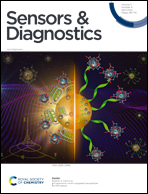Julolidine-based fluorescent molecular rotor: a versatile tool for sensing and diagnosis
Abstract
Fluorescent molecular rotors incorporating julolidine have found diverse applications in various fields. Recently, researchers have explored their utility in polymerization, metal ion detection, self-assembly, aggregation, and detection of proteins and nucleic acids. These julolidine-based molecular rotors primarily serve as fluorescent turn-on probes, showcasing their effectiveness in sensing local environmental properties such as polarity, pH, viscosity, protein folding, and misfolding. This comprehensive review covers an array of julolidine-based fluorescent molecular rotors, along with their pertinent uses in the field of biological research and monitoring changes in the microenvironment through solvent dielectric constant, viscosity, self-assembled polymers, and submicrometer-sized membrane-bound compartments in live cellular systems. The discourse supports ongoing research concerning their diverse applications and provides a forward-looking perspective on their potential advancements.



 Please wait while we load your content...
Please wait while we load your content...